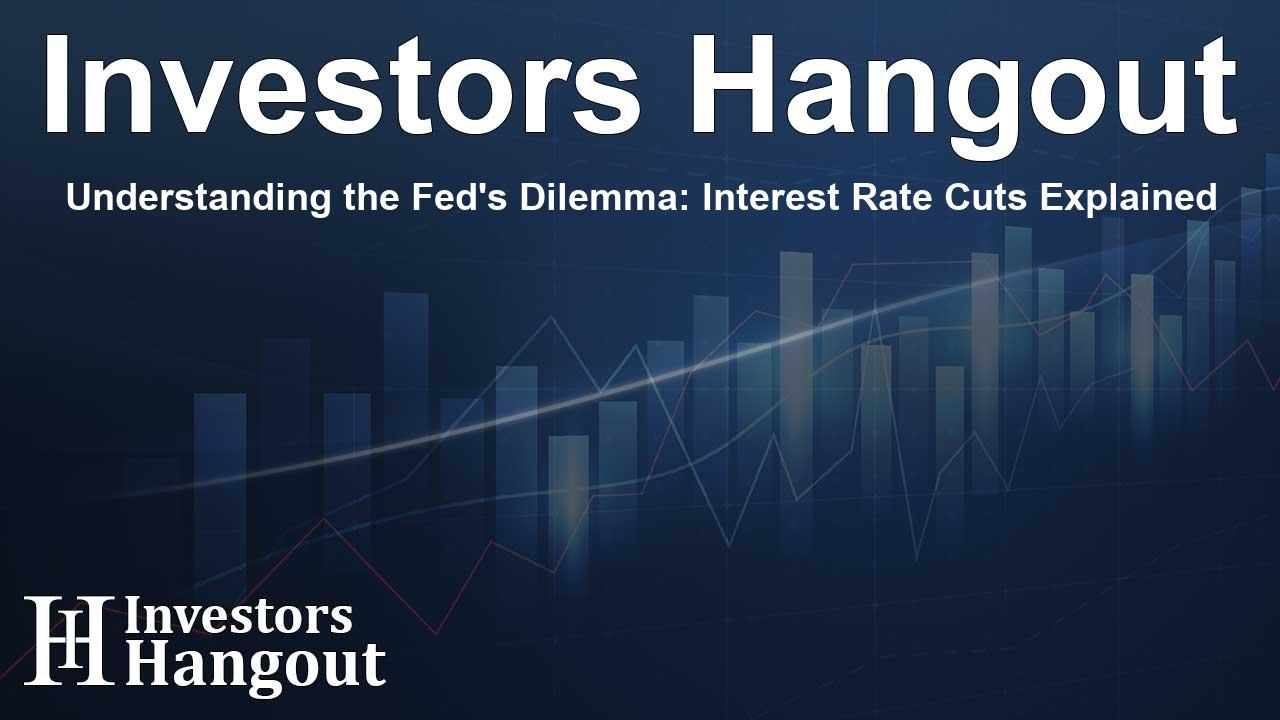Understanding the Fed's Dilemma: Interest Rate Cuts Explained

Challenges the Fed Faces in Managing Interest Rates
As market participants wait with bated breath for the Federal Reserve's upcoming decision on interest rates, a sense of uncertainty prevails—something we haven't seen in more than a decade. Traders and economists are navigating mixed signals and potential adjustments to rates that could impact their investment decisions and strategies.
Unusual Volatility for Traders
At the moment, the market seems to favor a reduction in interest rates by the Fed. Recent analyses show considerable speculation regarding the extent of this reduction. Traders are estimating a 65% chance of a more impactful 50 basis points cut, while a lesser 25 basis points adjustment is seen as having a 35% likelihood, according to the latest Fed Funds futures data.
A Level of Unprecedented Uncertainty
This week's FOMC meeting has sparked heated discussions among experts. Skepticism about the Fed's clarity has reached new heights, with many traders interpreting the situation in various ways. This ambiguity creates one of the most challenging environments for traders as they gear up for the Fed's decisions.
The Role of Communication Strategies
Traditionally, the Federal Reserve has used communication to steer market expectations. However, this week, the absence of identifiable leaks or trustworthy sources adding to market speculation has amplified the uncertainty. This sentiment has been echoed by former Federal Reserve officials, whose varied opinions about whether a 50 basis points cut or a 25 basis points adjustment would be more suitable further complicate the landscape.
Understanding the Fed's Moves
Many analysts believe that regardless of the decision made, the Federal Reserve will prioritize stabilizing market volatility. Following the announcement, there’s an expectation for a notable shift in the market based on the differing views within the financial community. As a result, a significant portion—around half—of market participants might find themselves caught off guard when the decision is finally revealed.
Approaches to Rate Cuts
If a 25 basis points cut is seen as 'Dovish', it might signal a path for continued reductions, addressing worries that the Fed could be falling behind. On the other hand, if the cut is viewed as 'Hawkish' at 50 basis points, it may be interpreted merely as an initial adjustment that doesn't raise major concerns regarding the economy.
Recent Economic Indicators
We've seen ongoing changes in the labor market. Some analysts argue that the Fed missed an opportunity to stimulate job creation by not reducing interest rates earlier in the year. Evidence indicates that a substantial number of job losses or sluggish job growth might push the Fed to consider a more aggressive 50 basis points cut.
Insights from the Summary of Economic Projections
Traders are also paying close attention to the Fed’s Summary of Economic Projections (SEP), as these insights are viewed as essential indicators for long-term interest rate expectations. It represents what the ideal interest rate might be under favorable economic conditions. Current outlooks hint at a slight upward adjustment from the June median of 2.8% to possibly around 2.9% or even 3.0%.
Market Reactions and Currency Implications
As always, movements in currency pairs like **USD/JPY** are crucial to monitor during these turbulent times. Historically, USD/JPY has shown distinct reactions to U.S. economic data releases, and this time is no exception. Depending on the Fed's course of action, outcomes could vary significantly, leading to potential gains or losses against key psychological markers like 142.00 and 140.
Navigating Through Market Trends
Grasping these dynamics is essential for both traders and investors who are aiming to position themselves effectively amid uncertainty. The observations that follow the Fed's interest rate decision will directly impact actions in financial markets and influence future trading strategies.
Frequently Asked Questions
What is the current speculation around the Fed's interest rate decision?
Traders are currently anticipating a rate reduction, with a 65% chance of a 50 basis points cut and a 35% chance for a 25 basis points adjustment.
What factors are influencing traders’ decisions this week?
The uncertainty surrounding the Fed's communications and the lack of clear direction has made this meeting particularly complex for traders.
How might the Fed’s decision affect the economy?
Rate cuts can stimulate the economy by encouraging borrowing and investment, but they also reflect concerns over economic performance.
What role does the Summary of Economic Projections play?
The SEP serves to provide insights into the Fed's long-term interest rate expectations, helping traders gauge future economic conditions.
Why is the USD/JPY currency pair significant during this time?
USD/JPY is often viewed as a sensitive indicator of market reactions to U.S. economic data and the Fed's decisions, making it crucial to observe amidst rate changes.
About The Author
Contact Dylan Bailey privately here. Or send an email with ATTN: Dylan Bailey as the subject to contact@investorshangout.com.
About Investors Hangout
Investors Hangout is a leading online stock forum for financial discussion and learning, offering a wide range of free tools and resources. It draws in traders of all levels, who exchange market knowledge, investigate trading tactics, and keep an eye on industry developments in real time. Featuring financial articles, stock message boards, quotes, charts, company profiles, and live news updates. Through cooperative learning and a wealth of informational resources, it helps users from novices creating their first portfolios to experts honing their techniques. Join Investors Hangout today: https://investorshangout.com/
The content of this article is based on factual, publicly available information and does not represent legal, financial, or investment advice. Investors Hangout does not offer financial advice, and the author is not a licensed financial advisor. Consult a qualified advisor before making any financial or investment decisions based on this article. This article should not be considered advice to purchase, sell, or hold any securities or other investments. If any of the material provided here is inaccurate, please contact us for corrections.
